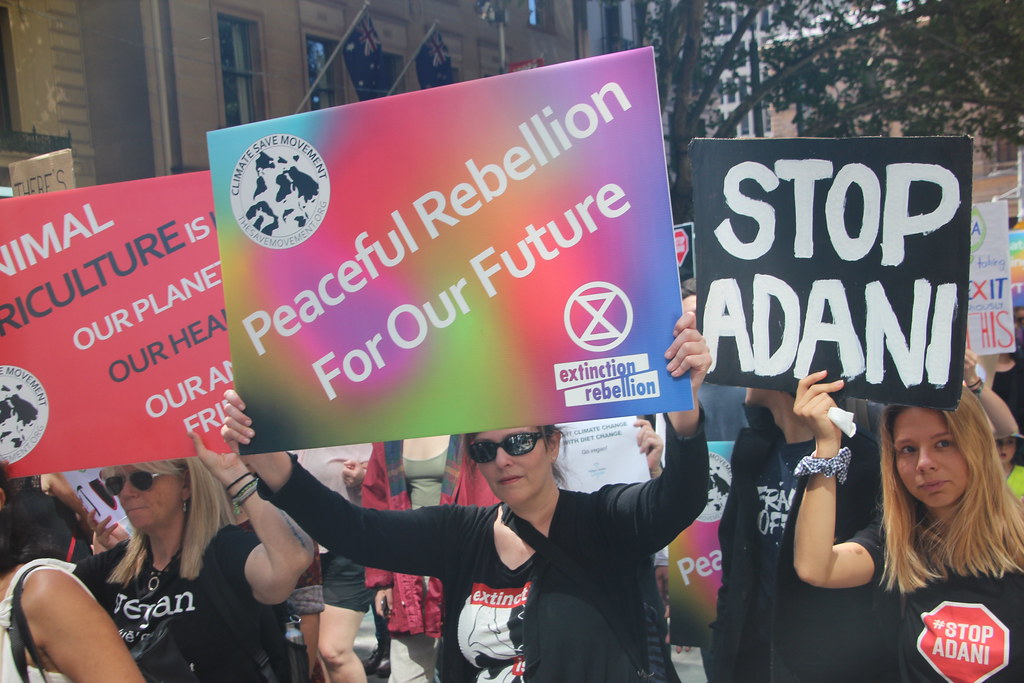Since their formation in 2018, Extinction Rebellion (XR) has become a household name. Known for their tactics of mass disruption, attention has been drawn to both the organisation, and the issue at hand – the climate emergency.
The media attention has also shone light on issues within the group, namely the lack of diversity and inclusivity. Critics questioned whether a series of missteps pointed to a ‘whitewashing’ of climate justice, ultimately resulting in the alienation of working class people of colour. Blocking public transport in predominantly non-white working class communities, centring arrest as a tactic, and publishing inaccurate prison guides all have contributed to the disenfranchisement of marginalised groups. Was this alienation a mistake, or does it nod to a major structural issue within the movement?

"Blocking of Lambeth Bridge by Extinction Rebellion, London" by Stefan Müller (climate) is licensed under CC BY 2.0
SUPPORTED BY HEROES LIKE YOU
Support independent eco journalism that drives real change.In the last 18 months, the world has undergone major transformation. The COVID-19 pandemic saw our entire approach to communication shifted, and digital space more important than ever in connecting people. Activism moved online, as in person protest was halted. The murder of George Floyd drew attention to police brutality and the deeply embedded systemic racism within our world, and people took to the streets and the internet in global protest. There was a cultural shift in how we engage with race across all contexts, and now more than ever is pressure placed on XR to reconsider the role of race within their movement.
To understand the role of race within climate activism, it is vital to first consider the role of race within climate change. The industrial revolution is at the heart of rising emissions, and this was built on colonialism and slavery, meaning the ‘development’ of the Global North was built on the exploitation of the Global South. This is critical as the Global South is disproportionately impacted by climate change, facing rising temperatures and extreme weather, resulting in crop failure, flooding and migration. XR’s future-facing narrative fails to acknowledge these major threats, and the way in which climate change is bound up in race and wealth.

"Peaceful rebellion for our future - Extinction Rebellion - Melbourne climate strike - IMG4256" by John Englart (Takver) is licensed under CC BY-SA 2.0 _
XR’s tactics are based on the theory that mobilising 3.5% of the population results in change. They support this with the civil rights and Indian independence movements, however Nafeez Ahmed has debunked this, suggesting the statistics have been wrongly applied. These slow burning grassroots movements emerged within directly impacted communities targeting institutions directly causing violence. There is little evidence that this is applicable to the complex power dynamics of climate change, and that targeting the government will enable direct change.
At first glance, the decentralised non-hierarchical structure of XR points to success – no one holds power and everyone is equal. However, without structures actively helping to amplify marginalised groups, these people remain at the margins, with societal hierarchies operating. Within many climate activist groups, POC have reported being ignored or side-lined at the expense of people Emily Atkin calls ‘Climate Chads’ – those who don’t believe racial inequality and climate change are related. This is directly linked to the ‘Beyond Politics’ narrative that aims to involve people from all political backgrounds, but ultimately enables intersectionality to be ignored.
Despite this, using focus groups and local branches has opened up XR. Creating specific targets, like Stop HS2, shifts the impacts of climate change from being distant and intangible into a space of clarity. Local groups enable context dependent regional change, for example in Bristol, where XR Bristol have tackled anti-racism through conducting research on inclusivity, and creating a framework to manage the issue. Others have paired with organisations such as Stand Up to Racism, BLM, and Stop the Maangamizi, building trust and solidarity, and amplifying these voices.

Photo by Ethan Wilkinson on Unsplash
This structure, however, is a double-edged sword, as regional groups also can act under the name of XR, without consulting other members, as we saw with the Canning Town protest. This also shifts the responsibility to a local level rather than national, also making the dedication to anti-racism a responsibility of local groups.
Given this shift in scale, XR UK seem to have done little to address these issues. Activists have called for a fourth demand, already adopted by some global strands:
a just transition that prioritizes the most vulnerable people and indigenous sovereignty; establishes reparations and remediation led by and for Black people, Indigenous people, people of color and poor communities for years of environmental injustice, establishes legal rights for ecosystems to thrive and regenerate in perpetuity, and repairs the effects of ongoing ecocide to prevent extinction of human and all species, in order to maintain a livable, just planet for all.
This still hasn’t happened. However, a number of working groups seem to have been created, including XR Liberation, and the project Justice within XR. The International Solidarity Network works with activists on the ‘frontline of the crisis’ to address the present day impacts of climate change. Work is clearly being done within the organisation, with workshops being provided to train rebels, and the plan for an internal framework to be created to ‘eliminate internal oppression’.

Photo by Ma Ti on Unsplash
Following the Impossible Rebellion, and with the coming COP26 in Glasgow, XR are in a critical position to prove they are inclusive and diverse. The controversy surrounding Insulate Britain’s blocking of motorways during rush hour shows that climate activism has a long way to go in engaging the remainders of society, so XR could be central in changing this discourse of disruption. They pledge to unify voices from around the world in the coming months, creating an ‘alternative summit’ to the COP26. The future will tell how committed XR is to ending white supremacy and creating a fully inclusive and diverse movement within climate activism.




